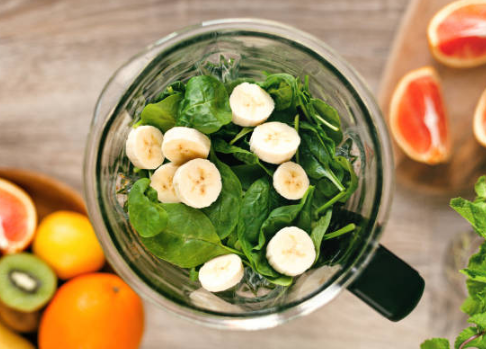What’s not to love about smoothies? They’re convenient, tasty, and packed with nutrition—offering protein, fiber, healthy fats, vitamins, minerals, and antioxidants.
But not all smoothies are created equal. Some are low in filling nutrients like fiber and protein, and high in carbs and added sugar. That combo makes them less satisfying and not-so-helpful for weight loss.
Here are six common smoothie mistakes that could be holding you back:
1. Skipping Protein or Fiber
Adding protein to your smoothie helps you feel fuller for longer and supports healthy blood sugar levels.
Protein triggers the release of satiety hormones, sending signals to your brain that you’re full. Fiber is also key for fullness and blood sugar control. Like protein, it slows digestion so blood sugar rises more gradually and steadily.

Great sources of protein:
-
Protein powder
-
Collagen peptides
-
Greek yogurt
Good sources of fiber:
-
Fruits
-
Vegetables
-
Nuts
-
Seeds
2. Not Checking the Label
If you’re buying pre-made or store-bought smoothies, always check the nutrition label—including calories and ingredients. Many store-bought smoothies lack protein and fiber but are loaded with carbs and sugar.
For example, a large “White Gummi” smoothie from Jamba Juice, made with high-sugar sherbet, contains 565 calories, 136 grams of carbs, 123 grams of sugar, but only 4 grams of protein and 1 gram of fiber.
Tip: Look for smoothies made with fresh or frozen fruit (not juice or syrup) and aim for at least 15 grams of protein per serving.
3. Using a Low-Calorie Smoothie as a Meal Replacement
Smoothies can work as meal replacements in a pinch—but only if they provide enough calories and protein to keep you full until your next meal.
A proper meal-replacement smoothie should contain at least 400 calories and 20 grams of protein.
Relying on a low-calorie, low-protein smoothie for a meal can backfire, causing you to overeat later.
Tip: Make sure your meal smoothie has a good balance of protein, fiber, and healthy fats for lasting energy.

4. Adding Sweeteners or Sweetened Ingredients
While it’s fine to enjoy a sweet smoothie once in a while, it’s best to stick with natural sources of sweetness like fresh or frozen fruit.
Some store-bought and pre-made smoothies are loaded with added sugar from flavored syrups, sorbets, or even ice cream. And even homemade smoothies can sneak in extra sugar through flavored yogurts or sweetened dairy and plant-based milks.
Too much added sugar can increase the risk of weight gain, type 2 diabetes, and heart disease.
Tip: Choose unsweetened ingredients—such as unsweetened protein powders, plain yogurt, and unsweetened almond or oat milk—to cut down on added sugar.
5. Using Only Fruit Juice
Fruit juice contains beneficial nutrients like vitamin C and potassium—but using it as your smoothie base can significantly raise the sugar and carb content.
Plus, juice lacks the filling fiber found in whole fruits.
Tip: Use whole fruits instead of juice and choose a base like water or unsweetened plant-based milk (such as almond or coconut milk) to keep sugar levels in check.
6. Skimping on Healthy Fats
Fat is an essential nutrient that provides energy, helps produce hormones, and aids in the absorption of fat-soluble vitamins.
It also adds creaminess and satiety to your smoothie, helping you stay full longer.
Tip: Add healthy fats like peanut butter, almond butter, chia seeds, or avocado to improve texture and increase the absorption of vitamins like A and K.
